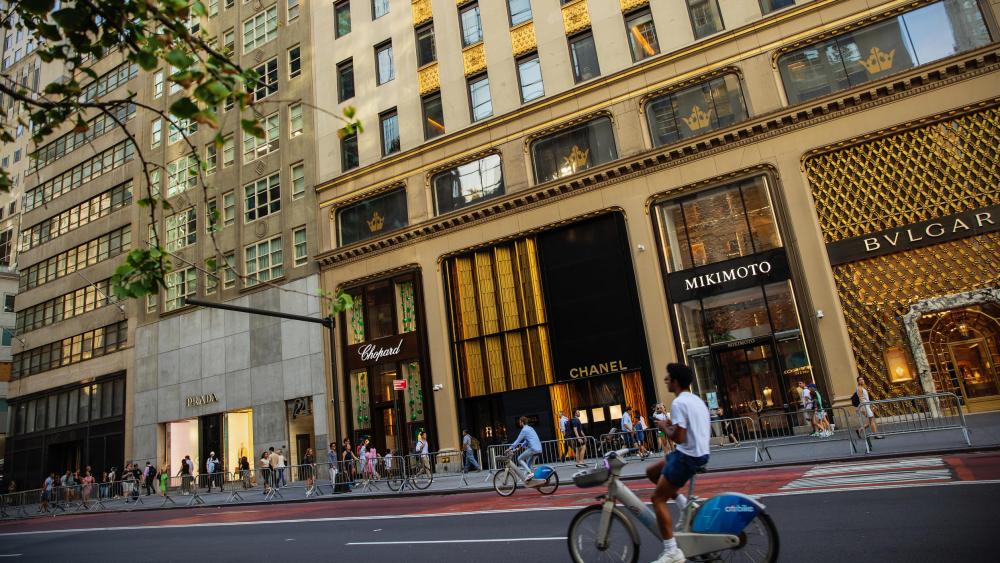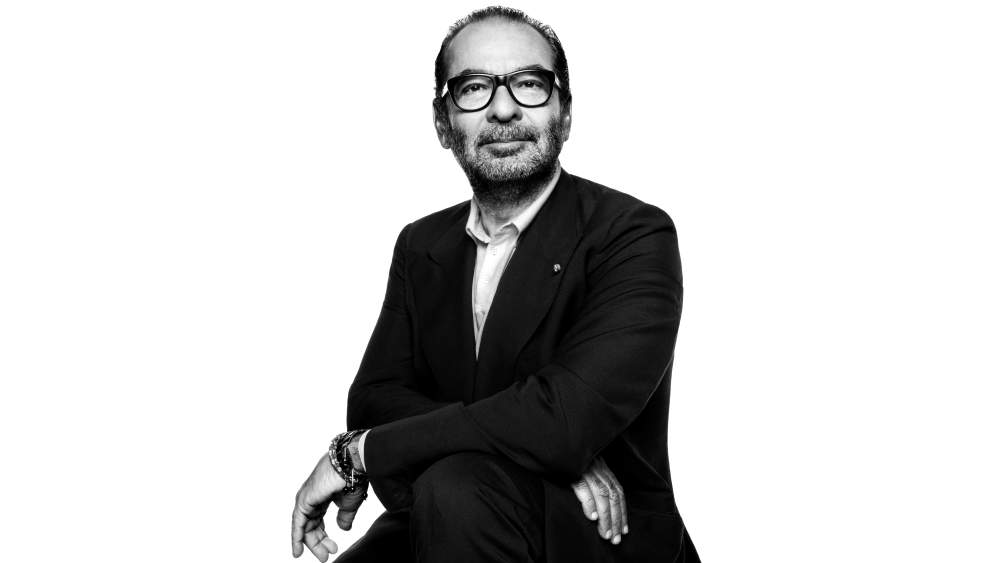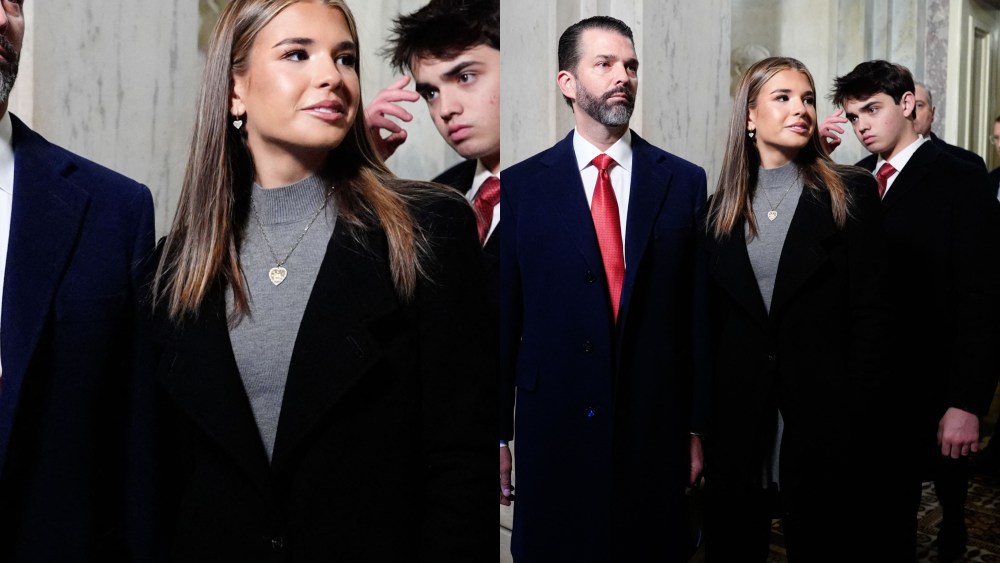Fifth Avenue is getting ready to mark its bicentennial in November, and there’s plenty more than a milestone to celebrate.
The ritzy, internationally renowned thoroughfare, which commands the world’s highest commercial rents, has undergone an unprecedented degree of investment, retail development and transformation in Midtown for the past two years, and it all seemed to conspicuously take off around the August 2023 opening of the redesigned Tiffany flagship with its completely transformed interior.
The Tiffany metamorphosis, which some sources pegged at $250 million to $350 million, while other sources estimate that cost was as high as $600 million to $800 million, including the art, was followed by a flurry of property acquisitions at lavish prices by luxury conglomerates. Prada bought 724 Fifth Avenue, site of its New York flagship, and the building next door where Abercrombie & Fitch formerly operated, for $835 million. Kering, owner of Gucci, Balenciaga, Bottega Veneta and Alexander McQueen, bought the 115,000-square-foot retail space at 715–717 Fifth Avenue for $963 million, considered the most expensive high street retail deal in the U.S. Armani will vacate the site and move to the designer’s mixed-used project under construction and opening in October at 760 Madison Avenue, and Dolce & Gabbana will also vacate the site and relocate to 695 Madison Avenue.
You May Also Like

“New York City’s Plaza District is the only place on Earth where residential, retail, office and hospitality — at the highest end — are all located,” claimed Will Silverman, managing director at Eastdil Secured, a real estate investment bank that advised the sellers in Prada’s and Kering’s property purchases on Fifth Avenue. “There is no other city on Earth where these premium uses are all in the same place,” said Silverman. “That creates a unique foot traffic experience,” to the Plaza District, which runs from 50th to 58th Streets, west to Seventh Avenue and east to Third Avenue. “Anytime someone raises the bar on the Fifth Avenue experience, the customer has been there to meet it.”
“It’s just been one deal after another on Fifth Avenue,” said Robert Siegel, chief executive officer, Metropole Realty Advisors Inc. “Billions and billions are being poured in. About two years from now, Fifth Avenue will be restored as the most iconic retail destination in the world for the ultra-affluent. If you remember when Warner Brothers opened its store on 57th and Fifth (in 1993) where Louis Vuitton is now, everybody said luxury on the avenue is dead. But it’s all been coming back again.” Siegel said that retail availability on Fifth in Midtown is becoming scarce.
Once blighted by too many empty storefronts, the vacancy rate on Fifth Avenue Midtown has dropped significantly. On the luxury corridor from 49th to 60th streets, the availability rate — vacant space, space available for sublease, and space soon to become available —stood at 17.4 percent at the end of the first quarter this year, a 10.1 percent decrease from five years ago when availability peaked at 27.5 percent, according to Cushman & Wakefield.
“The intersection of Fifth Avenue and 57th Street is arguably the most important intersection in North America,” claimed Charlie Koniver, a founder and principal in Odyssey Partners real estate which specializes in high streets and represented Brookfield in leasing to Chanel and Chopard in the Crown Building. “Anything in and around that area is very important to luxury brands. They know the traffic is there. They know the tourism is there and they know the daytime population is going to support the highest level of productivity.”
A Unique Moment in Time
Aside from the traffic, brands are drawn to “the prominence of Fifth Avenue facades,” Koniver said. “There’s height, stature, and an artistic expression that brands look for.”
With the recent string of multimillion-dollar Fifth Avenue property deals, “It’s a very unique moment in time,” Koniver said. “Heritage brands in the luxury world really find it important to maintain a long-term commitment,” on heritage streets. “But this is not the only time brands have done this. Tiffany did own its building prior to LVMH’s acquisition of Tiffany, and LVMH has owned its property where LV is for a very long time.”
Among the major projects in the works or soon to happen on Fifth Avenue in Midtown:
- LVMH will demolish its Louis Vuitton flagship on the northeast corner of 57th Street, and build a tower with a new LV flagship at an estimated cost of $500 million. LVMH, according to media reports, is said to be seeking a site for a Cheval Blanc hotel and has eyed 745 Fifth Avenue, housing the Bergdorf Goodman men’s store.
- Rolex at 665 Fifth Avenue is redeveloping its U.S. flagship and office headquarters, creating a 28-story structure with nearly 200,000 square feet of office and retail space.
- A tower anchored by an 80,000-square-foot Ikea store is in the planning phase for 570 Fifth Avenue between West 46th and 47th streets. As part of Ikea parent company Ingka Investments’ strategy to expand Ikea’s presence in urban areas, the company will have a one-third stake in the 1-million-square-foot project, which is slated to open in 2028.
- The Crown family, owner of the Little Nell Hotel in Aspen and a major owner of Rockefeller Center, will invest $185 million to open a 130-room hotel at 10 Rockefeller Plaza, right off Fifth Avenue.
Also in the works, a plan to redesign Fifth Avenue itself.
“We want to make Fifth Avenue more inviting for New Yorkers and tourists. Fifth Avenue is very crowded on the holidays. It becomes difficult to walk the streets,” said Madelyn Wils, interim president of the Fifth Avenue Association, a business improvement district covering 46th Street to 61st Street along Fifth Avenue, as well as 57th Street from Madison Avenue to Sixth Avenue.
“When Fifth Avenue was first created 200 years ago, it was built with very wide sidewalks. In 1915, however, construction was finished on making the roadbed wider for cars, narrowing the sidewalks,” Wils explained. “With our plan, we want to give people a lot more space for walking, cycling, sightseeing and window shopping — like a boulevard from Bryant Park to Central Park.”
Wils said she expects the plans for the redesign project to be completed sometime in the fall. Besides widening the sidewalks, the plan could encompass landscaping and artwork. There could also be a furtherance of vehicle-free days on Fifth Avenue. Last year, on Dec. 3, 10, and 17, Fifth Avenue from 48th Street to 59th Street was closed to vehicle traffic from noon to 6 p.m. For developing the redesign of Fifth, the association is working with the Central Park Conservancy, Bryant Park, the city’s Economic Development Corp., and landscape architects.
Among the plans for the avenue’s bicentennial celebration, several luxury flagships and hotels will create special activations, menus, and merchandise; the Fifth Avenue Association will provide tours examining the avenue’s rich history and role in holidays, film and culture, and also planning a car-free birthday party in early December. The sidewalks from 46th to 61st streets will be transformed with decor and photo opportunities, while the vehicle-free streets holiday program will return with “curated” programming, food and beverage, and musical performances organized by retailers. The celebration will carry into 2025.

Hot Dogs & Luxury
Fifth Avenue isn’t immune to what ails many parts of New York City. Homelessness and sellers of illegal and counterfeit merchandise are evident. “The security issue is a palpable thing in New York. You do have to be extra mindful,” said Koniver. “The sale of fake luxury goods is a real issue, but vendors like those selling hot dogs is part of the cultural fabric of New York City, but they do inhibit visibility and take away from the luxury experience.”
Retailers along the avenue have been trying to get the city to crack down on sellers that are not allowed on Fifth except for Sundays. “We are hoping that with this plan, we will be able to give them a spot on the side streets that will be more intentional,” said Wils.
Yet quality-of-life issues haven’t blunted the influx of luxury as well as lower-priced stores. It’s been fueled by the post-pandemic return to brick-and-mortar shopping, landlords re-evaluating rents, and property sales reflecting conglomerates intent on preserving a future on the avenue. Over the past two years, openings include the Tag Heuer flagship at 645 Fifth Avenue; Swarovski’s first New York flagship at 680 Fifth Avenue; and Chopard, the Aman New York hotel, and Chanel’s watch and fine jewelry boutique all in the Crown Building at 730 Fifth Avenue.
Billions and billions are being poured in. About two years from now, Fifth Avenue will be restored as the most iconic retail destination in the world for the ultra-affluent. If you remember when Warner Brothers opened its store on 57th and Fifth (in 1993) where Louis Vuitton is now, everybody said luxury on the avenue is dead. But it’s all been coming back again.
Robert Siegel, CEO, Metropole Realty Advisors Inc.
Moncler, retail sources said, is expected to take space in the GM building, on Fifth Avenue between 58th and 59th streets where Under Armour once planned to open but ran into financial difficulties. A lease is said to be in the works. Moncler did not respond to inquiries on the matter.
For more of a general audience appeal, Mango opened a flagship at 711 Fifth by subletting the former Ralph Lauren space; Abercrombie relocated with its updated format to the former Hollister site at 668 Fifth Avenue replacing the A&F store a few blocks north. And Hoka athletic footwear opened at 579 Fifth capping eight years of footwear openings along the avenue including Nike, Puma and Adidas.
Others strengthening their commitments on Fifth include Bulgari, which extended its lease. Hublot and Tag Heuer reinvested in Fifth Avenue through relocations between 51st and 52nd Street. Kim Kardashian’s shapewear brand Skims leased 20,000 square feet at 647 Fifth for a store that is expected to open next year.
But two prime sites have remained vacant for years — the former Henri Bendel flagship at 712 Fifth Avenue, and the former Tommy Hilfiger store at 681 Fifth Avenue. Metropole’s Siegel is trying to lease the former Hilfiger space which he says has 22,000 square feet with 42 feet of frontage. The former Henri Bendel site at 712 Fifth Avenue is owned by the Paramount Group real estate investment trust. Bendel’s closed in January 2019, and Harry Winston is expanding into some of the space. It’s a beautiful building with multiple levels and nooks and crannies with potential for a food hall, though retailers have noted it’s a challenging configuration for fashion merchandising.

Securing a Future
Rents in the upper 50s on Fifth are tracking at $2,500 to $3,000 a foot; in the lower 50s it’s closer to around $2,000 a foot. At one time, the corner of 57th and Fifth peaked at $5,000 a foot. Luxury brands take the view that if they have the money, and plan to occupy a Fifth Avenue location for the next few decades or longer, it pays to buy the property. They gain a salable asset that likely rises in value over time and can be leveraged if needed. In late November, Cushman & Wakefield reported that Fifth Avenue retained its spot as the world’s most expensive shopping street with average rents of $2,000 a square foot, followed by Tsim Sha Tsui in Hong Kong and Via Montenapoleone in Milan.
“The number-one thing that’s happened on Fifth in the last year is investments from luxury users, but it’s now also a mass market story with the Ikea investment,” said Silverman, of Eastdil Secured. “Whether it’s Prada, Kering or Ikea, it’s all companies with spectacular access to information and intelligence,” enabling them to realize and tap into the area’s potential. “It’s the idea of wanting and making sure you secure a location for eternity. That’s becoming increasingly important.”
“Stores have to be more creative about the experiences they provide so when you come in, it’s an event that’s interesting, an art exhibit, or Champagne,” said Wils. “You have to provide personal attention, more things to look at and do. Tiffany is a good example of that. On every floor there is an enormous amount of artwork and every floor is different. Tiffany understands how to draw people in. But most of the retailers at this point know they have to do something, to go that extra mile. And stores have changed, particularly high-end luxury stores.”
“When you examine the retailing on Fifth Avenue from 42nd Street to 59th Street, it’s really broken into three different segments,” observed Gene Spiegelman, vice chairman and principal at Ripco Real Estate. Forty-second to 48th streets is a section more populated by mass merchants and still some local shops. Forty-eighth to 53rd streets, dominated by Rockefeller Center, St. Patrick’s Cathedral and Saks Fifth Avenue, is very tourist-oriented with several contemporary and mass-appeal stores such as Lego, Uniqlo, Zara, Cole Haan and Michael Kors. And from 54th to 59th streets it’s much more luxury retail and hotels, with The Peninsula, the St. Regis, Swarovski just opened at 680 Fifth, Chanel and Chopard recently opened, Rolex under construction, and the new Tiffany. Each of these segments have seen recovery.
“Another interesting storyline revolves around the future of Saks Fifth Avenue and Bergdorf Goodman,” Spiegelman added, referencing Saks’ owner HBC reaching a deal last month to acquire the Neiman Marcus Group which owns Bergdorf’s, and HBC’s approximate $250 million investment to renovate and modernize the Saks flagship.
For the Saks-Neiman’s merger to go through, it must be approved by the government. A decision could take months. Along Fifth Avenue, Spiegelman noted, “There really are different retail storylines,” suggesting a unique retail narrative.




